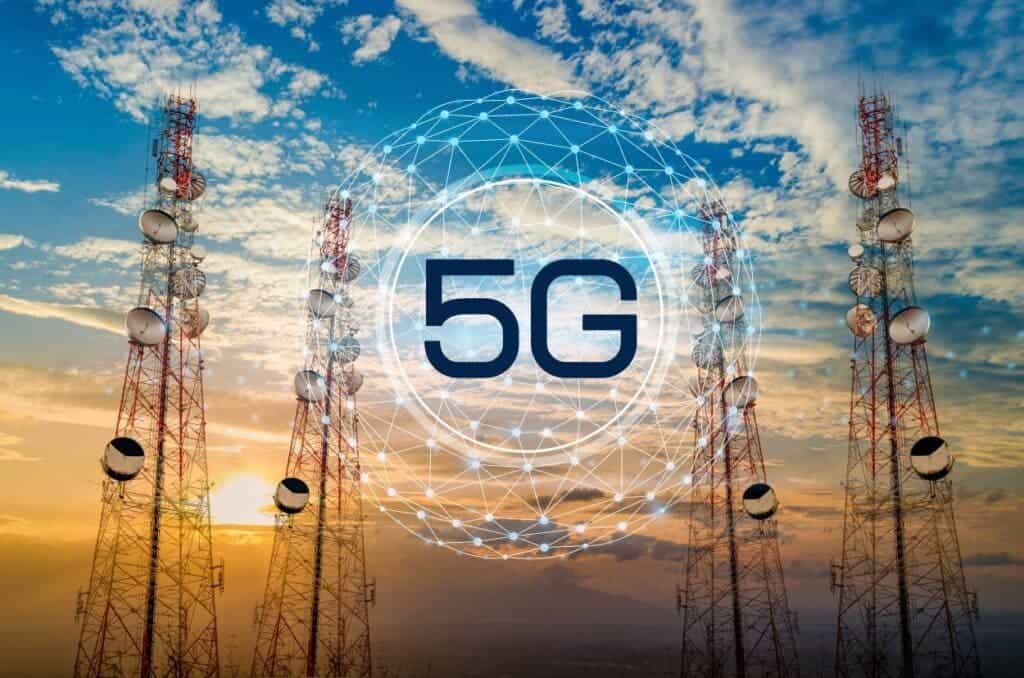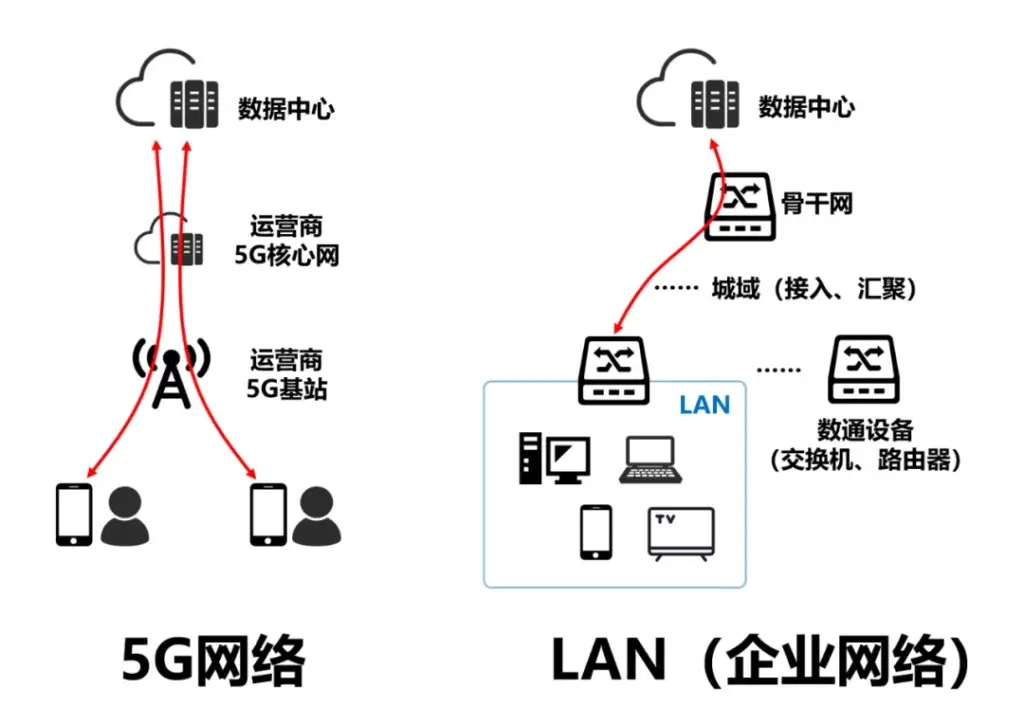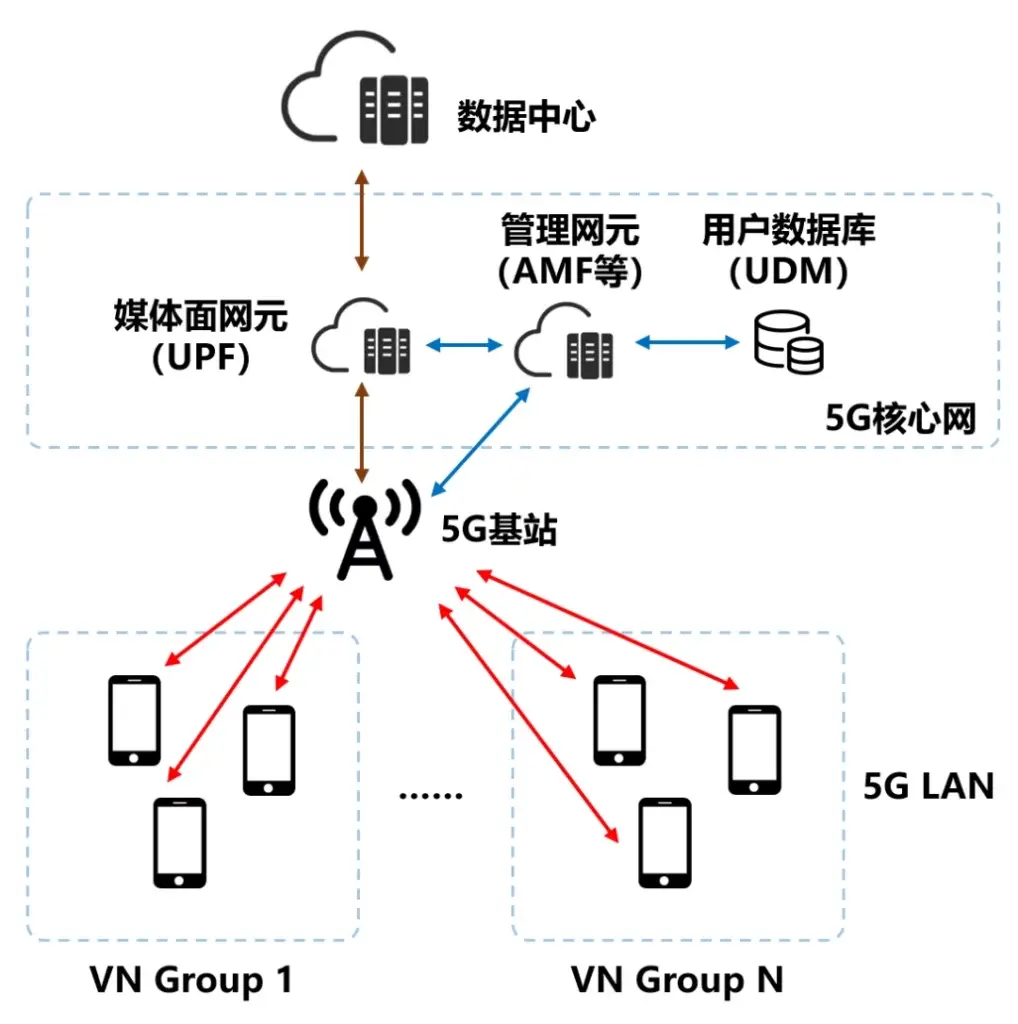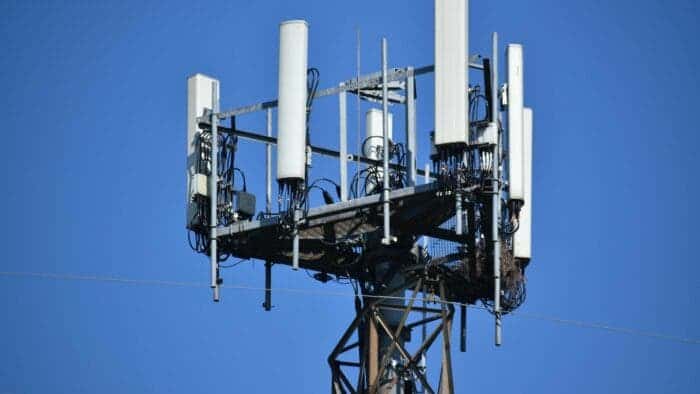In today’s article, we will talk about 5G LAN. If you have a little understanding of communication technology, know that 5G LAN is actually a very interesting concept. As of now, everyone probably already knows about 5G. It is the evolution of 4G and our latest mobile communication technology. For LAN, we should be more familiar with it. The full name is Local Area Network, which is the network in our local environment. Our home network, as well as the network in the company office, are basically LAN. With wireless Wi-Fi, it is Wireless LAN (WLAN). So why do I say 5G LAN is interesting?

Because 5G is a wide-coverage cellular communication network, while LAN is a small-scale regional data communication network. The two technologies do not seem to relate. In other words, 5G and LAN are known separately. But when put together, it’s a bit confusing. Isn’t it?
5G LAN, what is it?
Simply put, 5G LAN means to use 5G technology to “group” terminals to form a LAN network. For a direct 5G network, no matter how close two smartphones are, they can not communicate over the network. On 5G base stations, all mobile devices are “isolated”. This is because of security considerations. Each mobile phone uses its own channel and does not interfere with each other. As for the LAN, the devices (mobile phones, computers, etc) in the area connect together and become a “group”. This not only facilitates mutual data transmission but also saves the external network exit.

In a LAN, terminals can find each other through MAC addresses. For access to the external network, a router can be set up, and routing in and out (layer three communication) can also be achieved through IP address selection.
We all know that “4G changes life, 5G changes society”. 5G shoulders the mission of “interconnecting all things…”. For this reason, 5G can not only rely on a connection between a device and the cloud. It must support a connection between close devices. Therefore, in the 3GPP R16 standard, a new feature function of 5G LAN was introduced.
Principles and Features of 5G LAN
In the 5G network, the administrator can modify the data in the user database (UDM network element). He can also sign the service subscription for the specified terminal (UE) number. Thus, divide them into the same or different VN Groups (Virtual Network Group, virtual network). The user database will provide the management network elements (SMF, AMF, PCF, etc.) of the 5G core network (5GC) with the VN group information of the terminal number and the access policy. Based on this information and policy rules, management network elements form different LANs. This is 5G LAN.

5G LAN supports Layer 2 communication (the same network segment, direct access to each other) and Layer 3 communication (cross-network segment, with the help of routing). 5G LAN supports unicast as well as multicast and broadcast. In short, the mutual access method is very flexible, and the networking is also very simple.
In terms of scope, 5G LAN supports not only mutual communication under the same UPF. It also supports mutual communication under different UPFs. This is equivalent to breaking the physical distance limit between devices. An important aspect of 5G LAN is that it can connect with the user’s existing data network to achieve plug-and-play and mutual access.
Application scenarios and advantages of 5G LAN
5G LAN realizes the grouping and connection between designated 5G devices. This greatly facilitates enterprises to build a more mobile LAN network. Many readers will surely ask, isn’t the existing Wi-Fi technology already able to achieve mobility? Why do you still need 5G LAN?
Don’t worry, let’s move on
Local networking by 5G LAN can help users such as enterprises, schools, governments, and families to better interconnect devices within a region. It works for office networks, but its greater value lies in the transformation of the production environment in the park. Its value also lies in its application in industries, and mines.

We are all promoting the Industrial Internet now. We believe that 5G can enable the digitization of industrial scenarios because 5G has the characteristics of large bandwidth and low latency. It is an excellent wireless communication technology that can realize the wireless connection of various production elements in industrial scenarios.
So, back to the previous question, since there is Wi-Fi, why 5G LAN?
The reasons are as follows:
1. Wi-Fi networks (especially Wi-Fi 4 and Wi-Fi 5) are not as good as 5G
In terms of transmission rate and delay, 5G can better meet the needs of industries. Whether it is manipulation control for robots or high-speed image recognition, 5G is better. What about unmanned logistics vehicles? WiFi can’t even compare with 5G.
In terms of coverage, 5G has a larger coverage area than Wi-Fi. This means that 5G can better cover a wider area. The inter-cell handover capability of 5G is also stronger than that of Wi-Fi. This brings users a better network experience.
2. Maintenance cost of Wi-Fi network is high
Enterprises need to build their own Wi-Fi networks and buy their own equipment when building an area Wi-Fi network. The equipment depreciates, get bad, requires replacement and needs maintenance. This maintenance can not be done b just anybody. It requires high-skill special personnel. Also, Wi-Fi devices and configuration is also very troublesome. All these will require a lot of funds
For 5G, the situation is different. The building and maintenance will be done by the operator. The enterprise only needs to rent it and their expenditure is fixed. Putting these considerations together, 5G will be more cost-effective.
3. 5G LANs are more powerful
5G LAN involves grouping devices to form a local network. An important role of this grouping is to achieve QoS (class of service) differentiation of different networks. For example, a company may need different networks. It could have office networks, IT system networks, and operation technology networks. These different networks have different performance requirements. Some require low latency, some require large bandwidth, and some do not have so many requirements. On the basis of grouping, 5G LAN can define different network performance for different groups. Some companies call it “micro-slicing”.
4. 5G LAN is easier to manage and more secure
After forming a network group, a company do not need the permission of the operator to change the group. The operator’s 5G network can open the modification authority to the enterprise network manager. Of course, enterprises can also set their own private network policies according to their own needs. When establishing a data connection, enterprises can also set up authorization and authentication mechanisms to strictly manage groups. This security is much stronger and more convenient than Wi-Fi.
5G LAN technology will help factories to achieve more flexible connections. It also increases the efficiency of factory production line adjustment by 70% (7 days to 2 days). In terms of MES networking efficiency, it reduces it from 6 months to 3 months.
Conclusion
The Industrial Internet is the cornerstone of the fourth industrial revolution. The technological innovation of 5G private networks such as 5G LAN is of great significance to the comprehensive digitalization, networking and intelligence of the industrial field. The accumulated innovation will eventually lead the world to the “Intelligent Connectivity of All Things”.

